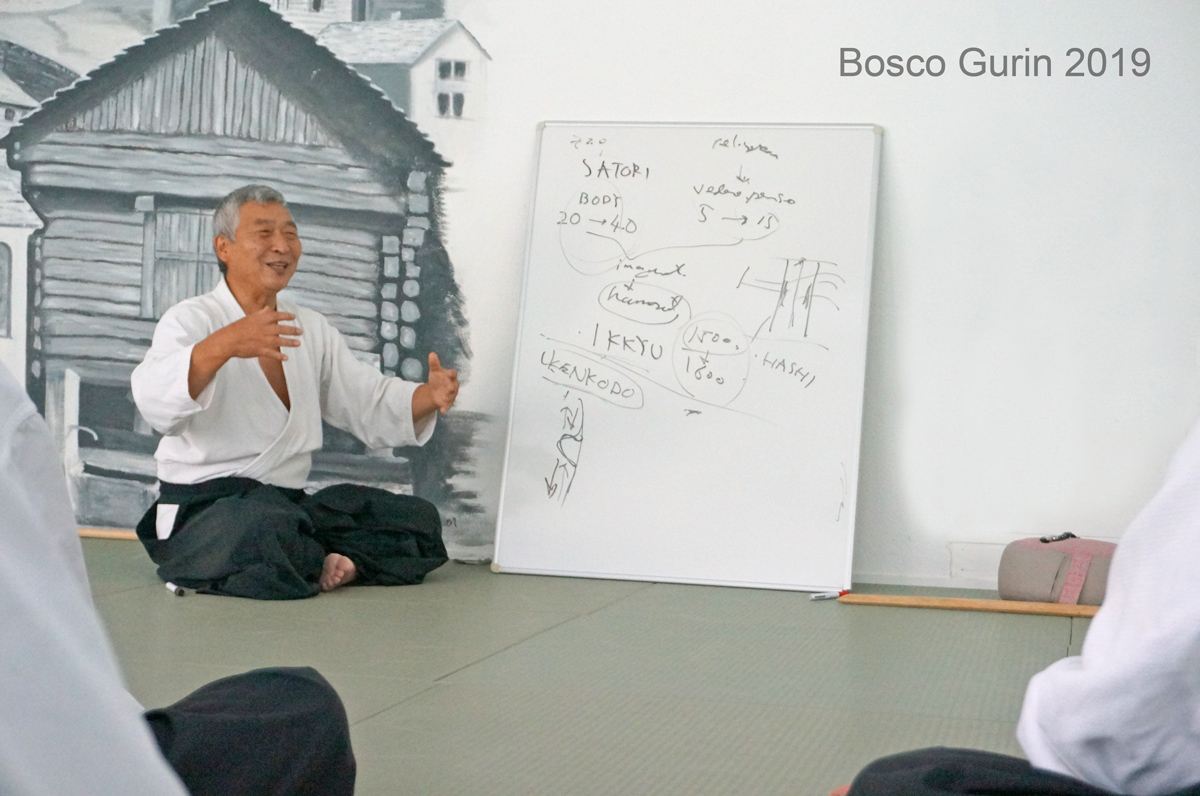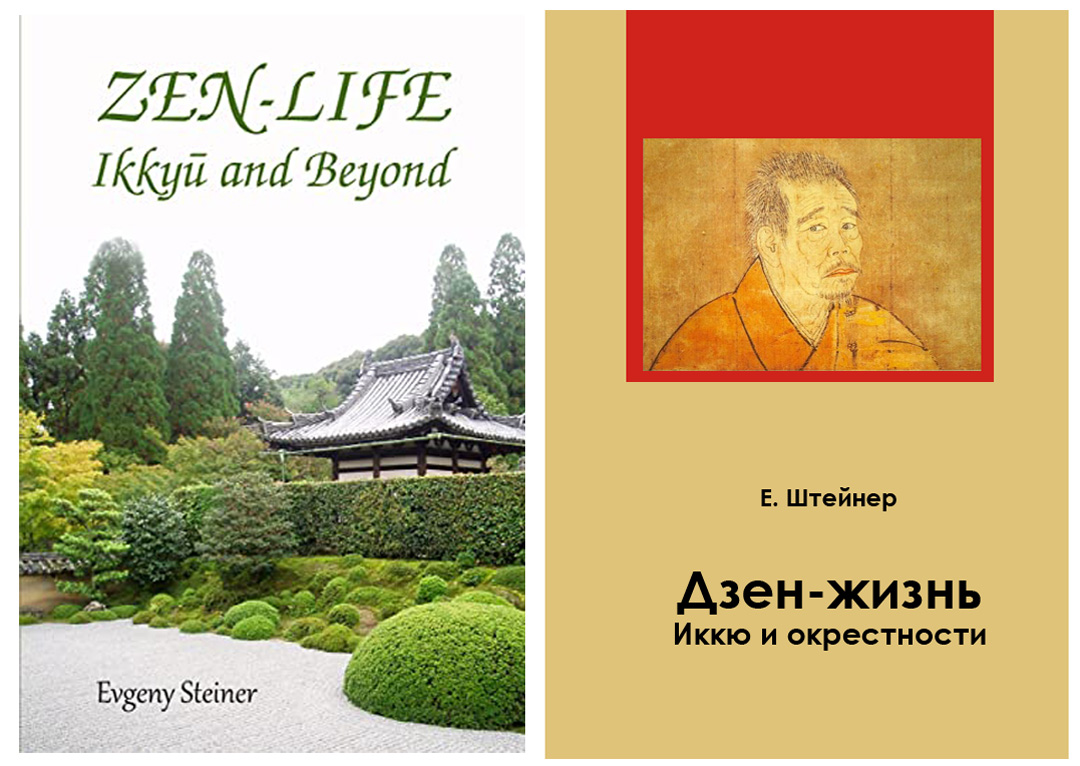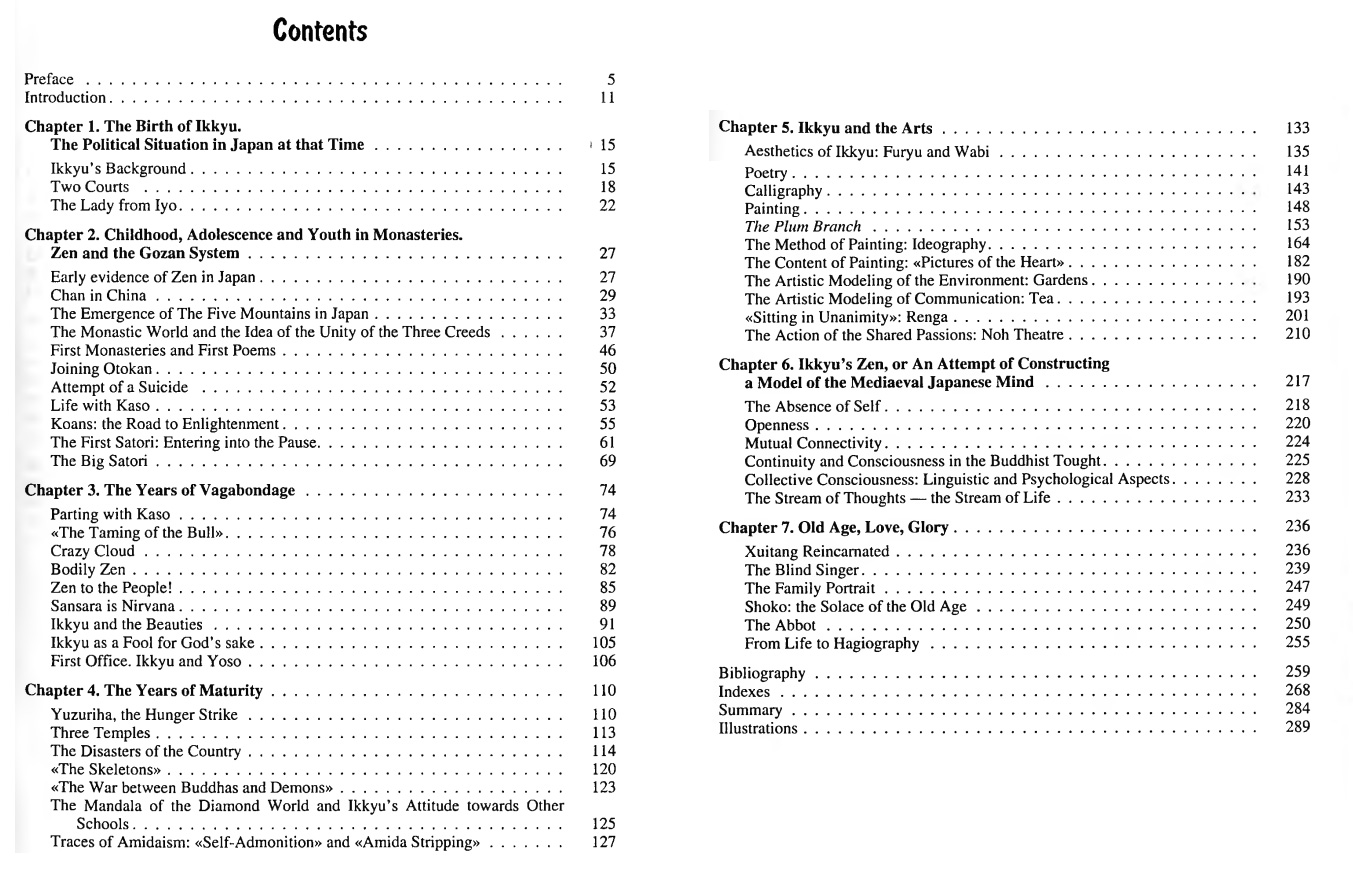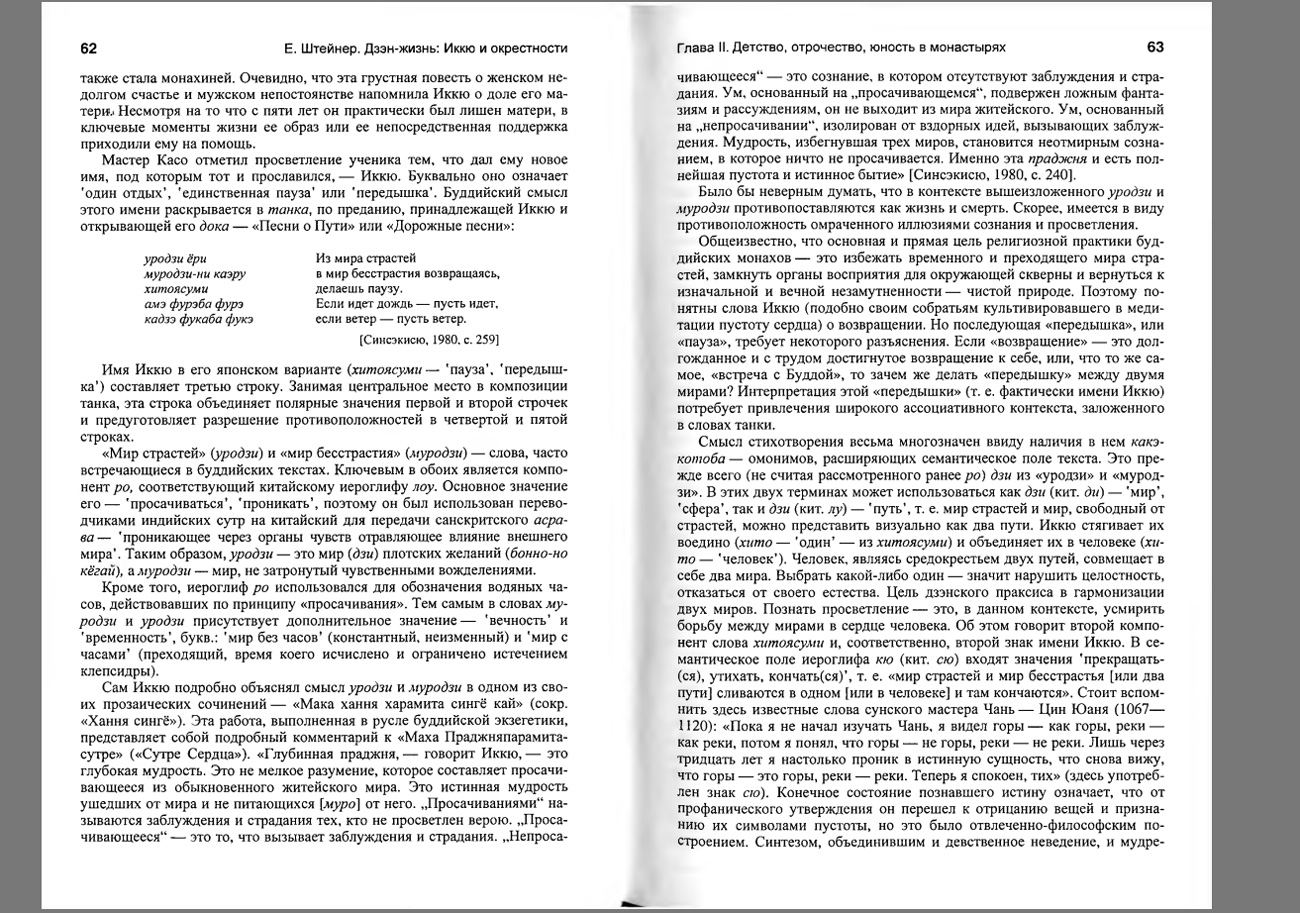Text of the video
一休禅師 物語
Ikkyū Zenji Monogatari
Stories about the Zen master Ikkyu
Here is a story in Japan from 600 years ago.
There was a wise child monk called "Ikkyu".
IKKYU-SAN
Ikkyu used his wisdom to manage authorities around him.
Today, I'd love to tell you the story of Ikkyu.
It was 1394, Muromachi period.
A boy was born.
Because he was a love child of the Emperor,
the boy was targeted for life.
So, his mother shaved the baby's hair to make him a monk,
and helped him escape to a temple.
Once he got to the temple, he was named "Ikkyu".*
Ikkyu was still six years old at that time;
but he wasn'nt allowed to see his mother,
and needed to practice monk's discipline very hard every single day.
One day, someone brought a gift, a pot of precious honey.
Little child monks were longing to lick the honey so badly.
Then Osho-san (the Master Monk) told them,
"In fact, this is poison. If you eat it, you will die!"
Little child monks were wondering if it was true,
yet still wanted to taste the honey inside the pot.
So, they asked Ikkyu about it.
Then, Ikkyu got an idea ...
While Osho-san was out, Ikkyu dropped the most expensive vase at the temple.
It was Osho-san's favorite one.
Little child monks were so shocked to see what Ikkyu did and tried to run away.
But then, Ikkyu said to everyone
"Listen" We broke the most expensive vase"
To pay for our sin, let's end life together!"
And he started eating the honey!
Other child monks also joined him.
They ate EVERYTHING.
When Osho-san got back to the temple,
he found his favorite vase broken,
and the little child monks were all crying
and chanting Buddhist sutra.
"What is going on?!"
"We're very sorry! We broke your precious vase!
So, to make up for our sins,
we ate the POISON in the pot!
EVERYTHING!
But, for some reason, we could no die ..."
Osho-san figured out that it was clever Ikkyu's trick to eat the honey.
Remember? Osho-san made a lie "This is poison!"
"Aaaah!! That's fine!Everyone, that's fine! Stop it!" said Osho-san.
The Shogun (general) at the castle had heard the story about Ikkyu.
"What a smart child monk!
I'd love to invite him to my castle." said the Shogun.
Ikkyu was so excited when he received the invitation
and thought that the Shogun would share a great meal with him.
However, when Ikkyu arrived at the castle,
the Shogun told him ...
"I've heard that you are a very clever monk.
So, I ask you a favor!
Look at the tiger on this folding screen!
This tiger jumps out of the folding screen, and does terrible things!
We're in trouble ...
Can you please capture the tiger for us?"
Of course it was a lie.
There was no way a picture tiger could jump out of the picture,
but the Shogun wanted to see how Ikkyu would react.
It was a challenge from the Shogun
to which no one could say "No".
In his mind, the Shogun was laughing at Ikkyu.
"Even if you are very smart, it's impossible to do this, in't it?"
But the, Ikkyu said "Sure! I'LL tie it up.
Could you pleas give me a rope?"
"Could you do that?!" said the Shogun.
"Yes, of course!" said Ikkyu.
And Ikkyu got a rope from the servant, he said to the Shogun,
"So now, please drive the tiger out of the screen!
I'm ready to capture it! So ... NOW!"
The Shogun said, "What are you talking about?!
It's impossible to drive th tiger out - it's just a PICTURE.
The Ikkyu smilde and said, "That's good to know!
It IS impossible for the tiger to jump out of the folding screen!
I'm so relieved! The, we don't need to worry,
nor do I need to capture it!"
The the Shogun said,
"Aaaaah!! Excellent! You are really a clever monk!"
He was very impressed by Ikkyu.
When Ikkyu grew up, he left the temple, and went on a long journey.
He disliked people in authority.
Usually, famous monks were wearing magnificent purple kimonos and walking with servants,
but, when embarkin on a journey, Ikkyu wore a worn-out kimon,
and played the role of a poor monk.
He knew that the most important thing was a person's self,
not the clothes which show a person's rank.
Some thought Ikkyu was a weirdo,
but many others liked him.
In his later life, he fell in love with a blind lady called Shinyo,
and built a temple - "Shuon-an" in Kyoto.
In fact, the Imperial Court built a large expensive temple for Ikkyu;
however, he never visited there,
and stayed at his humble little "Shuon-an",
with Shinnyo, until his last day.
Just before his death, he said
"Ikkyu never dies. I will live forever."
He was right.
Japanese people still love and talk about Ikkyu's legend,
six hundred years after his death.
(This is where the video exaggerates because Ikkyu died only in 1481).
Ikkyu, who hated authority's power,
and loved citizenship and freedom,
rests in peace in his temple, still today ...
*In fact, Ikkyū received the name Sōjun (宗純, "Pure Teaching") only at the age of 16 upon entering Master Ken'ō's hermitage. And only after his first satori at the age of 24 did he receive the name Ikkyū (一休, "Little Break") from Master Kasō at Lake Biwa.




